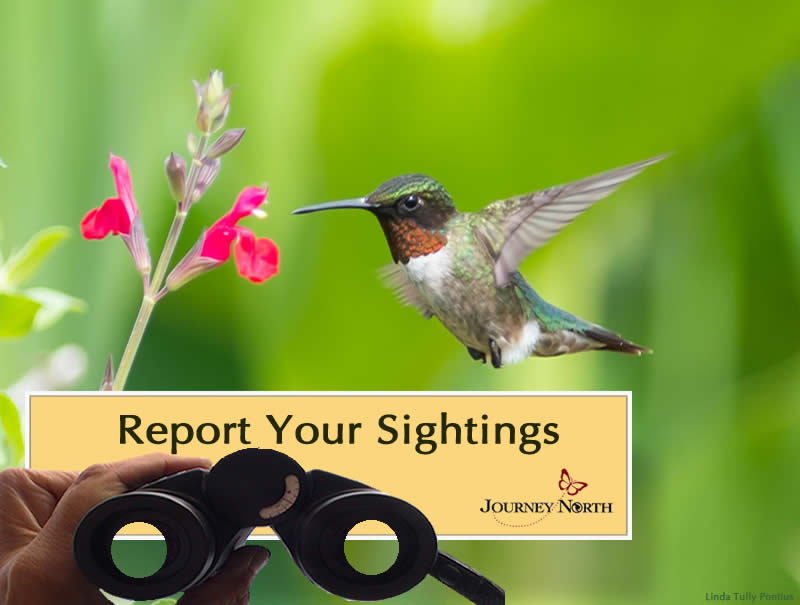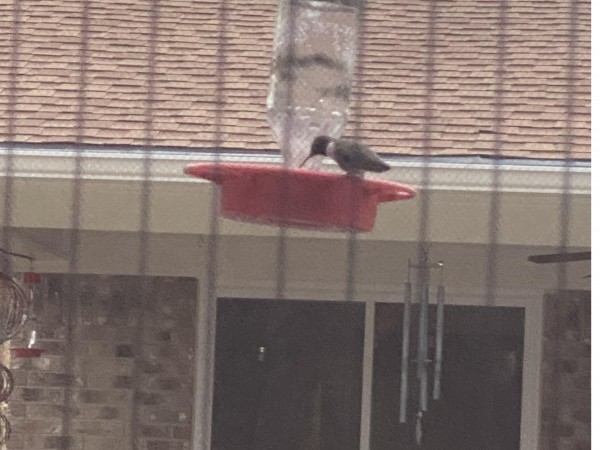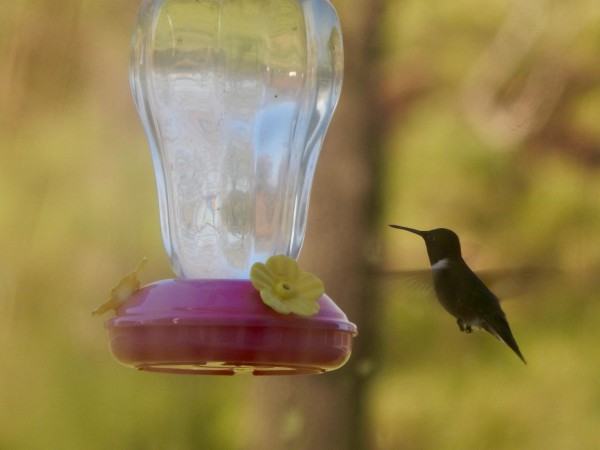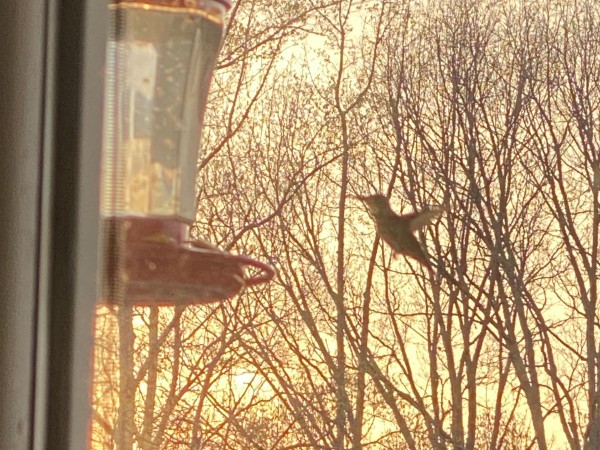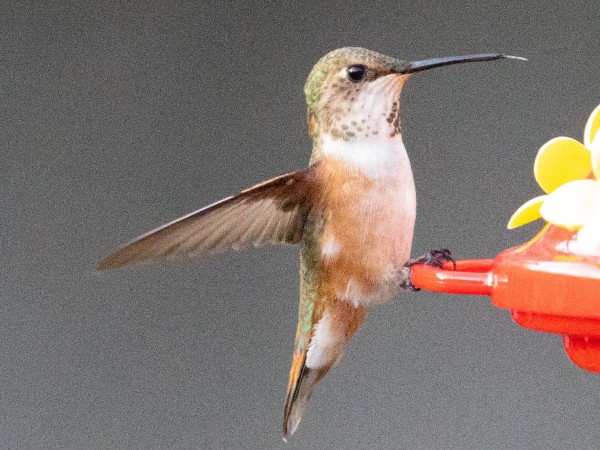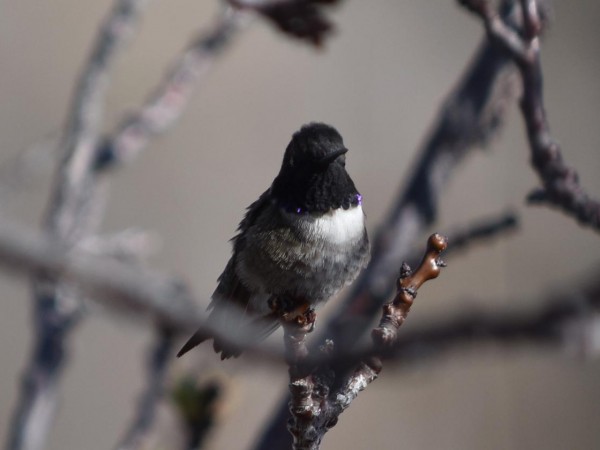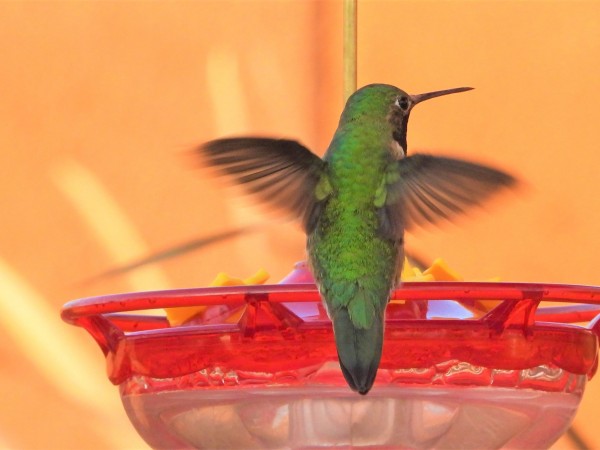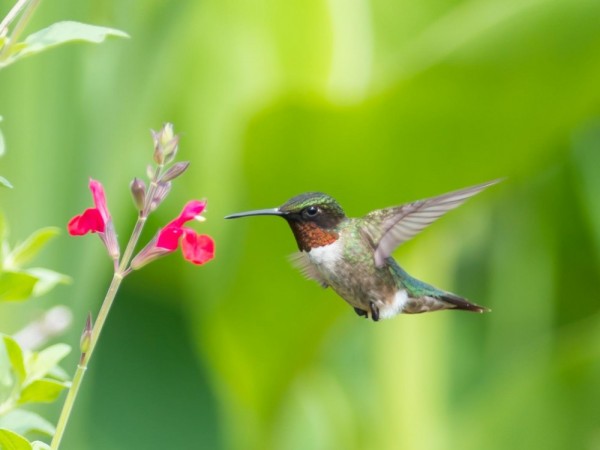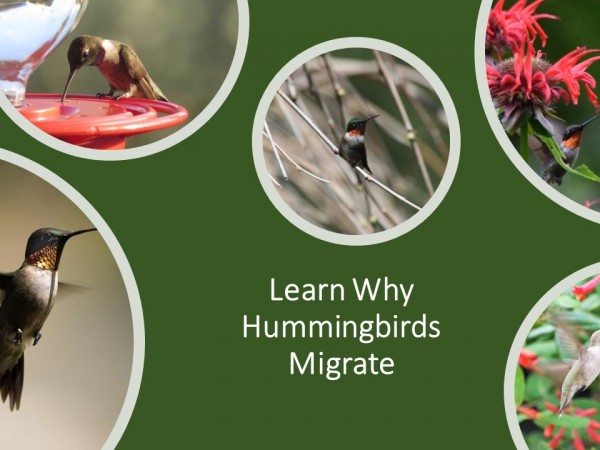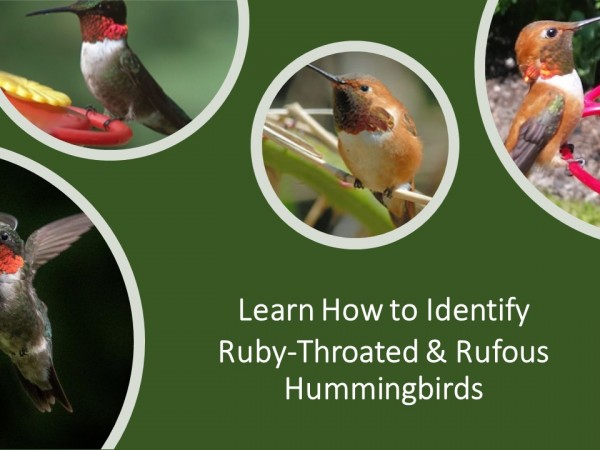Slowly Advancing
Where is the leading edge of hummingbird migration this week? Read on to find out. And as migration progresses, remember to put feeders out and plant nectar-rich flowers. Report hummingbird observations to Journey North.
Ruby-throated Hummingbird
The migration’s leading edge largely remains where it was last week. Clusters of reports are still coming in from northeast Texas, northern Alabama and Georgia, Tennessee, and the Carolinas. There are a few isolated reports farther north in Missouri and Virginia. Migration can be a stop-and-go journey with wind and weather in control. How does this year’s pace of migration compare to previous years? Explore our Hummingbird, Ruby-throated (FIRST) map to find out.
Susan in Azle, TX: "First actual [Ruby-throated Hummingbird] sighting at the feeder. As the syrup was diminishing I knew a little hummer friend was here." (04/02/2021)
Kathy in Trinity, NC: "They [Ruby-throated Hummingbirds] have returned several times this evening. Both the male and female have visited the feeder." (04/03/2021)
Debi in Clinton, TN: "Excited to see my first one [Ruby-throated Hummingbird] this season!" (04/05/2021)
Dave in Wirtz, VA: "A male Ruby visited one of my feeders early afternoon on 4/5/21. My first sighting this season." (04/05/2021)
Rufous Hummingbird
During migration, male hummingbirds migrate first to find and defend a breeding territory. As the season progresses, reports of female and immature hummingbirds will increase.
Sylvia in Penn Valley, CA: "[Rufous Hummingbird] 1,500 feet in the Sierra Nevada foothills. Female or immature male." (03/30/2021)
Some male Rufous Hummingbirds are already making their way up the British Columbia Coast. And as many Journey North observers can attest, male Rufous are quite territorial.
Jen in Prince Rupert, BC: "We have been feeding the resident Anna's Hummingbirds all winter. This morning there was a lone male Rufous at the feeder!" (04/03/2021)
Melody in Olympia, WA: "1 male [Rufous Hummingbird] hangs out on my feeders and chases away other hummers. One female seen eating on feeders this morning. The male buzzes my husband when he's in the back yard. The male is here daily." (04/04/2021)
Other Species and Observations
Black-chinned Hummingbirds are venturing out of Texas and moving west into New Mexico. And New Mexico is also welcoming Broad-tailed Hummingbirds.
Angele in Elephant Butte, NM: "Saw first Black-chinned hummingbird 4/1/2021. First at the feeder then an hour later at the feeder and resting in trees." (04/01/2021)
Mary in Alamogordo, NM: "First male Broad-tailed photo. I heard it on the 29th of March but finally got a photo..." (04/02/2021)
Observing Nectaring Behavior?
Clean and fresh feeders will attract the hummingbirds – so will flowers. Watch the map and be ready when hummingbirds arrive in your area. Put feeders out and plant nectar-rich flowers in gardens. If you observe hummingbirds nectaring from flowers, please report under the category Hummingbird, Nectaring from Flowers.
April is Citizen Science Month!
In just a couple of years, Citizen Science Month has grown from a single day of events, to a coordinated effort supported by SciStarter, the National Library of Medicine, Arizona State University, the Citizen Science Association, Science Friday, National Geographic, and many other collaborators from around the world. Citizen Science Month encompasses online events and opportunities to contribute to citizen science initiatives from home. This April, Journey North celebrates our citizen scientists and encourages others to join this important effort. Watch our Journey North video to learn how to participate. And learn more about Citizen Science Month and other Journey North projects here.
Keep Reporting
Keep reporting hummingbird observations to Journey North. If possible, include photos in your reports. And please make sure your photo is properly rotated before submitting.


